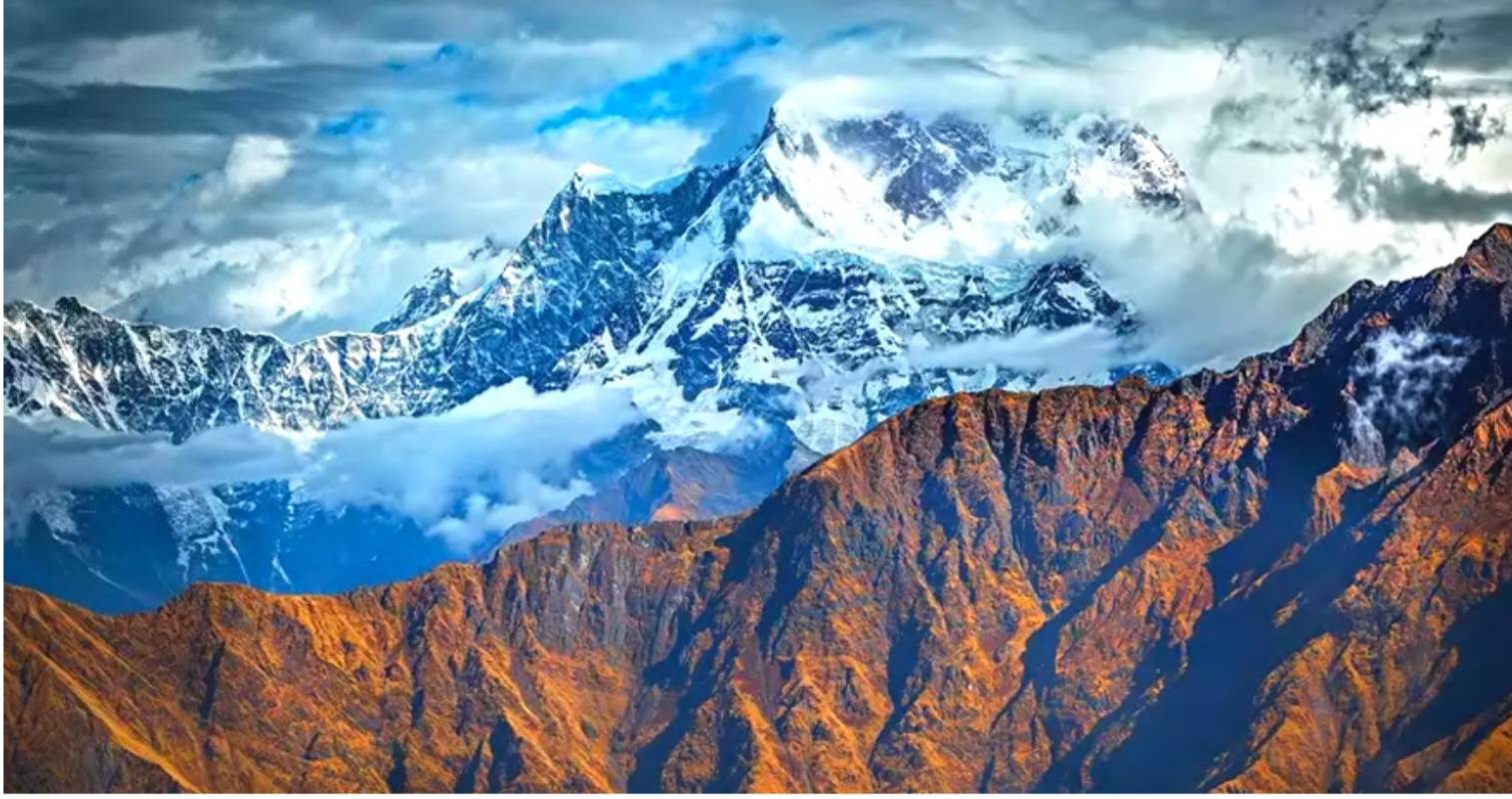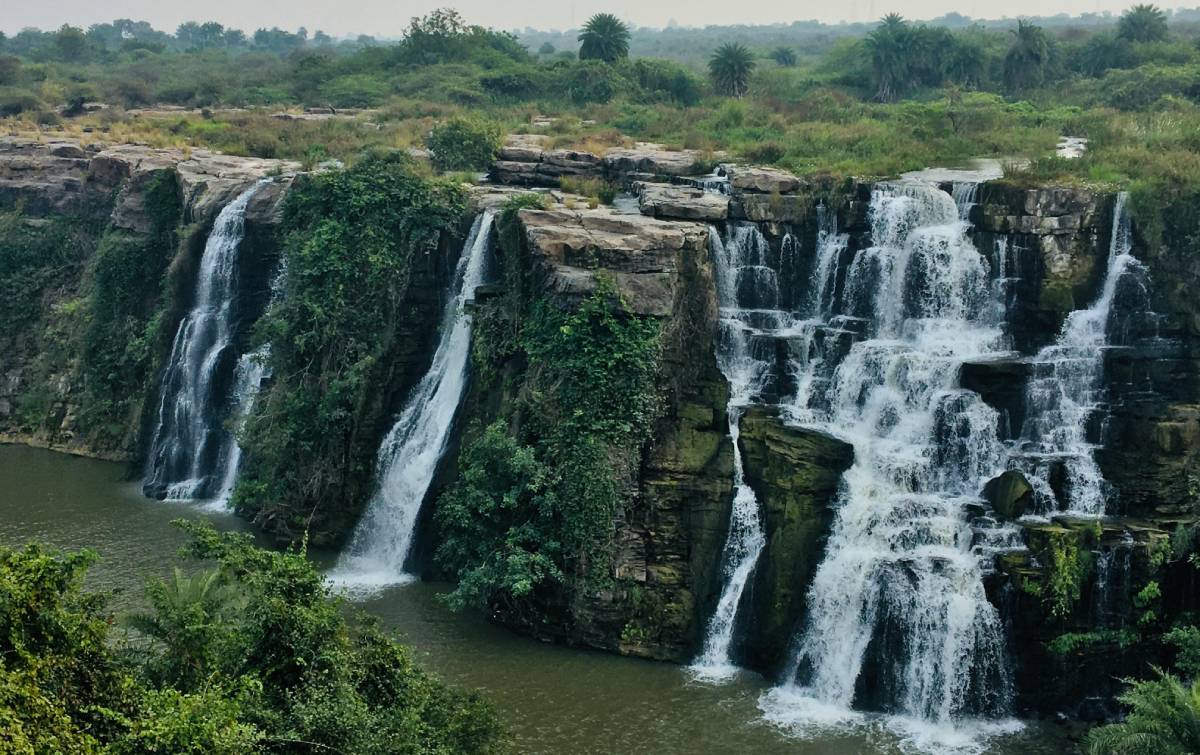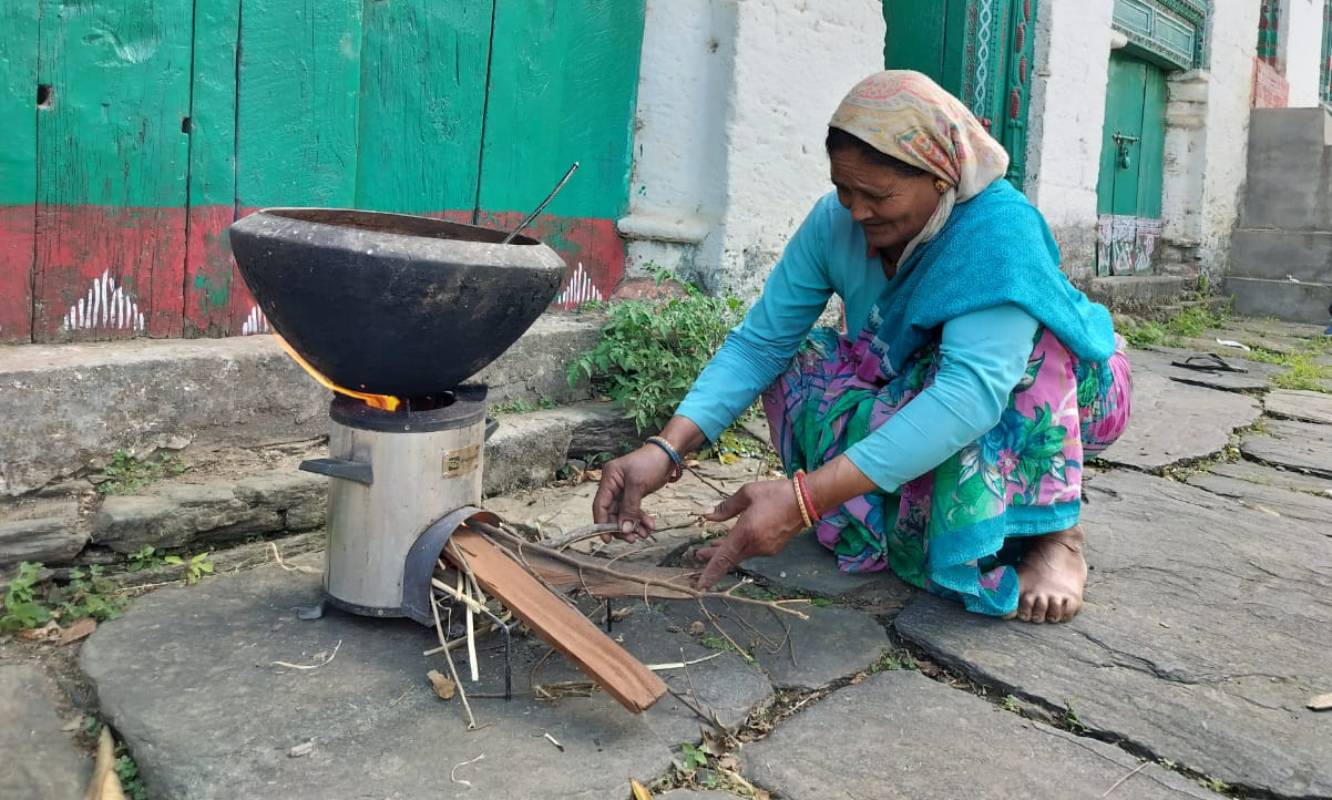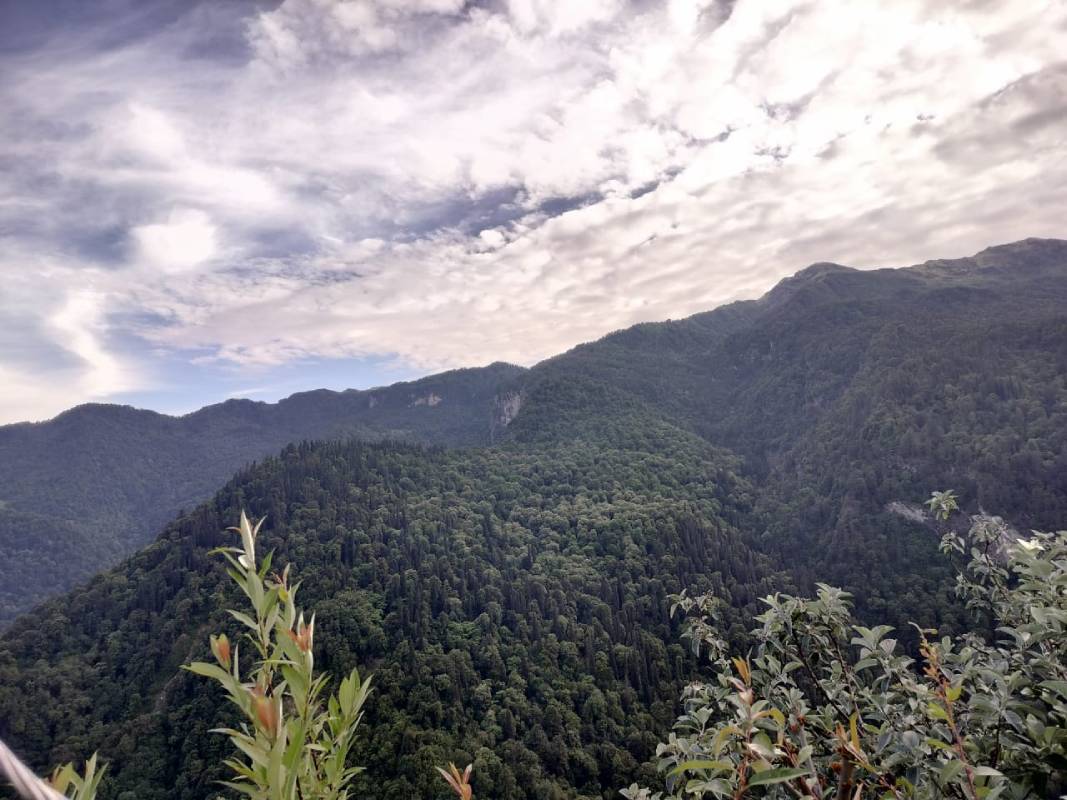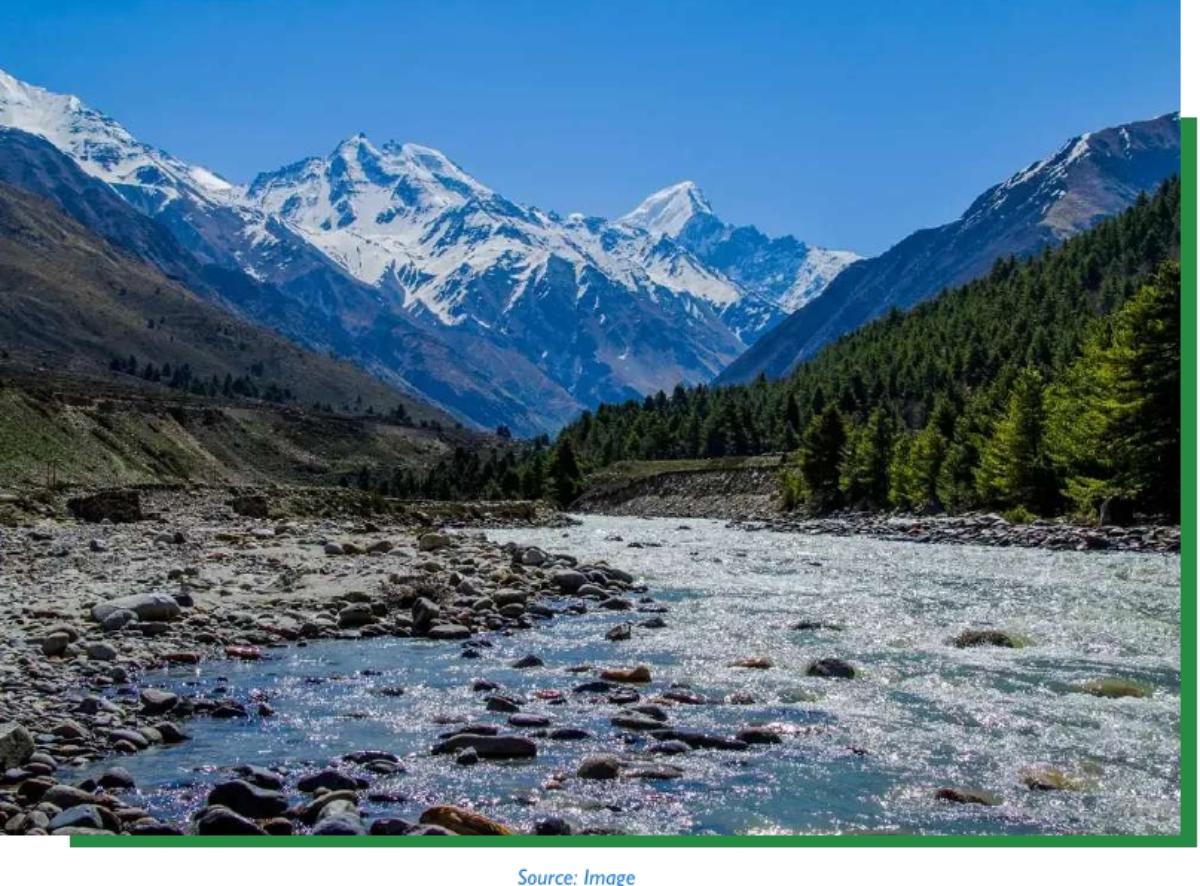The sustainability of the highly fragile and continuously evolving Himalayan range is not only crucial for people, wildlife and biodiversity of the region, but it has global significance. The geological formation of the region makes it highly vulnerable to natural disasters such as earthquakes, landslides, cloud burst and glacial burst. While a large infrastructural project in the region amplifies this disaster vulnerability, climate change has also started significantly contributing to these disasters by increasing incidents and intensity of harsh weather.
For many decades, scientists, activists and Himalayan people have been questioning the mainstream developmental approach in the Indian Himalayan region. Yet, successive governments and big corporations build large infrastructures to exploit and luxuriously avail the Himalayan region. The pitfall of such development in the region is now very evident, regular and devastating in the form of development induced disasters. Unfortunately, we invited all these pitfalls despite knowing the vulnerability of the region and its carrying capacity. In this backdrop the Meet of the Mountain States (MoMS) organized by Integrated Mountain Initiative in Delhi on 23 and 24 March 2023 and Mountain Development summit organized by Uttarakhand Sadbhavana Samiti from 5 to 7 April 2023 in Kausani (Uttarakhand) discussed right direction of development in the Himalayas. A brief report of these two events is summarized in this article.
Meets of the Mountain States:
(23 and 24 March 2023)
The meets of the mountain states was organized by Integrated Mountain Initiative (IMI) in Delhi on 23 and 24 March 2023 in collaboration with Divecha Center for Climate Change of Indian Institute of Science and Ministry of Environment, Forest and Climate Change (MoFCC). The meet brought together members of the IMI, law and policy makers from Indian Himalayan states and the central government along with other stakeholders such as researchers, scientists and field workers. This meeting of the mountain states discussed two major issues namely Resurgence of Millets and Plastic Waste Management in the Indian Himalayan Region.
Resurgence with Millets:
The International year of Millets, 2023 has been declared on India’s call. According to the Food and Agriculture Organization (FAO) the international year of millets is an opportunity to raise awareness of and direct policy attention to the nutritional and health benefits of millets and their suitability for cultivation under adverse and changing climate conditions. For mountain communities, this renewed interest in millets is very timely and one that must be leveraged. Millets are a crop of great importance and have been an integral part of food culture in the mountain. Cultivated traditionally, millets have occupied a space that has fulfilled nutrition requirements as well as occupied a high cultural significance. Millets are a resilient and nutritious crop and adapt to different ecological conditions that can withstand extreme heat conditions, low rainfall, long dry spells, making them an ideal plant in the face of changing climatic conditions.
Dr. Dyakar Rao from Indian Institute of Millets Research in Hyderabad in his speech discussed nutritional value and resilience of millets grown in the Indian Himalayan Region. According to him, over the last few years, a lot of scientific research and innovation have been carried under the institutional leadership of IIMR. The institution has also developed a large number of machines to process various kinds of millets. Moreover innovations have also been done in terms of seed improvement. Grass root activist Mr. Bijju Negi and millet growing farmers such as Mr. Vijay Jardhari, Nek Ram Sharma and Aletha Kordor discussed the ecological, economic and cultural aspect of millets production and consumption in the mountain region. Padam Shri Nek Ram Sharma observed that millets in mountains are the backbone of economy and food security but this can not be done without understanding and promoting symbiotic relationship between forests, agricultural land and livestock.
The Meet of Mountain States observed that the conservation of land resources and the diversity of seeds among farmers is top priority as many seed varieties have dwindled in the past decades. Post harvesting processes are still rudimentary and there is great scope for innovation in the sector to match that of wheat and paddy. Much of the millet ecosystem is to do with rain fed agriculture where a completely different regime of crop management needs to be adopted that needs mainstreaming.
Plastic Waste Management in the Himalaya:
Plastic waste is now a globally acknowledged crisis. This crisis in the ecologically fragile mountain regions of the IHR is further amplified due to remoteness, accessibility, limited land availability for waste treatment and disposal. Increasing urbanization and tourism in the Himalaya have made waste one of the most visible challenges. Litter along trails in tourist spots and open dumping of waste in valleys and streams have become common, which is a huge public health and environmental pollution issue.
Mr. Roshan Rai from the IMI, while presenting the data from the Himalayan Cleanup project stated in 2018 observed that there is a clear intersection between food and plastic waste that has been established by the data from the Himalayan Cleanups since 2018 that shows more than 80 percent of waste from home based audits and outdoor cleanups emanate from food packaging. It is an indicator of the changing food habits and preference for packaged and processed food items and the need to look at waste from a larger systemic lens.
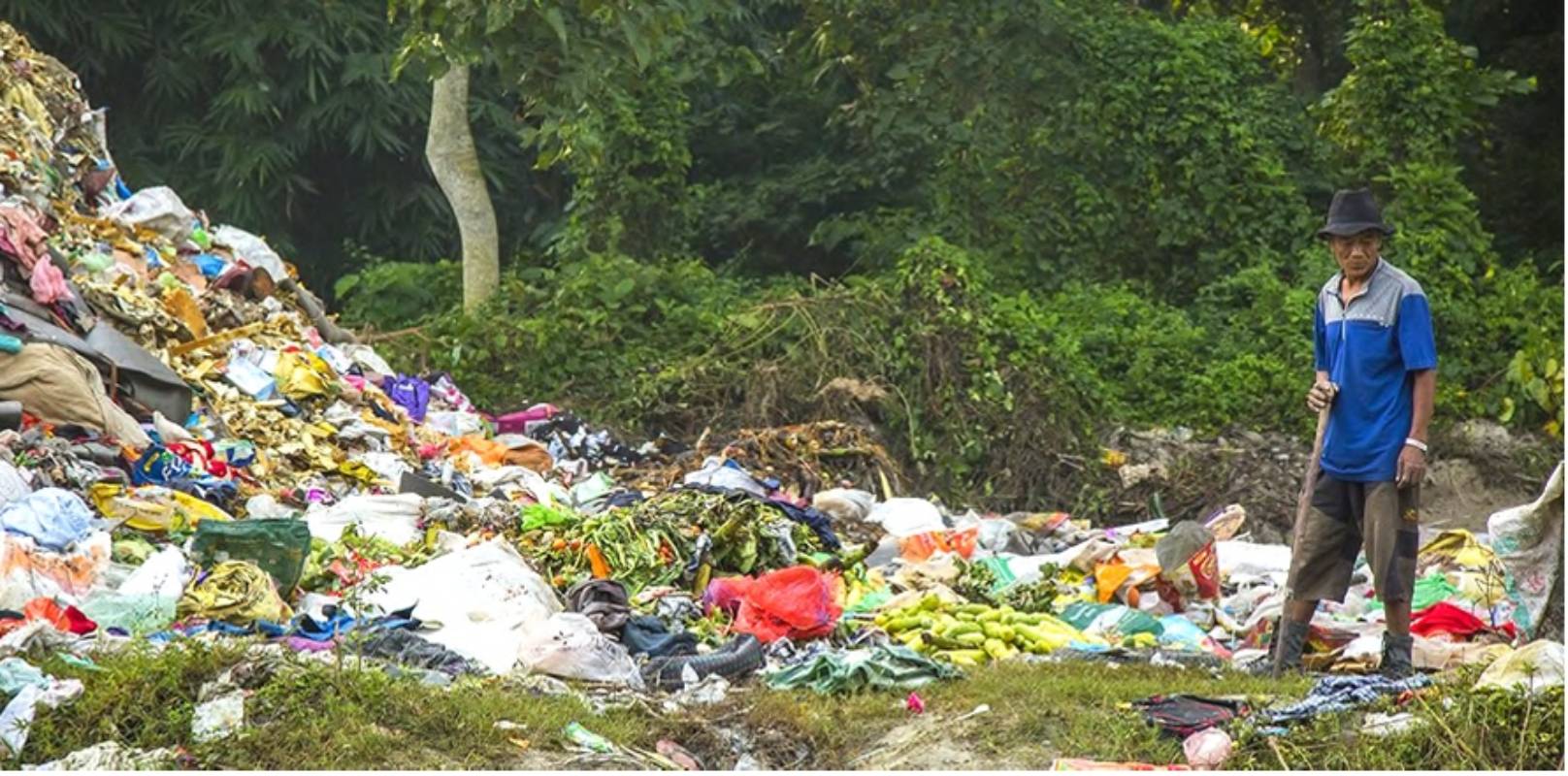
The session on plastic waste in the Himalaya was briefed by experts like representatives of Waste Warriors in Dehradun. He explained how their organization is involving local communities and producers of plastic waste in the cleanup programs in areas such as Dhramshala in Himachal Pradesh, Dehradun, Rishikesh and Ram Nagar in Uttarakhand. Scientists from Uttarakhand Pollution Control Board discussed the ever evolving Extended Producers Responsibility (EPR) policy developed by the state government. Moreover, the representatives of the board highlighted a few innovative steps taken by the government during Char Dham Yatra in Uttarakhand. Members of Legislative Assemblies from different Himalayan states have also expressed their concern on increasing plastic waste in the Indian Himalayan Region.
Right Direction of Mountain Development:
(5 to 7 April 2023)
The three day mountain development summit in Kausani organized by Uttarakhand Sadbhavana Samiti and Uttarakhand Sarvodaya Mandal from 5 to 7 April 2023 discussed current developmental challenges in the backdrop of vision and legacy of Sarala Behn, Mira Behan and other such Gandhian thinkers and activists. Remember, Sarala Behn and her work on the first day of summit in Kausani, president of Uttarakhand Parivartan Party, Mr. P.C. Tiwari said, “Just before her death in 1982, I interviewed her for a magazine. I was not fully convinced with whatever she was saying. But the important part of this conversation was that she was saying whatever she was doing. And this conviction makes her a true Gandhian.”
Sarala Behn came to India in 1932 to join India’s freedom struggle led by Mahatma Gandhi. In the next one decade she actively participated in struggles for freedom led by Mahatma Gandhi and involved a number of constructive programs of Mahatma Gandhi such as education, women empowerment and environmental conservation. On advice of Mahatma Gandhi she moved to Almora (Uttarakhand) in 1941 and later founded the Pravatiya Paryavaran Sanrakshan Samiti (Mountain Environment Conservation Society). In the last four decades of her life she worked for women, children, farmers, mountains, rivers, land and forest of Uttarakhand. Apart from her extensive constructive work in the rural Himalayan areas, she was also a prominent Sarvodaya thinker and advocate of sustainable development in mountains. She wrote extensively in the form of booklets and letters to highlight specific developmental needs of the mountain region.
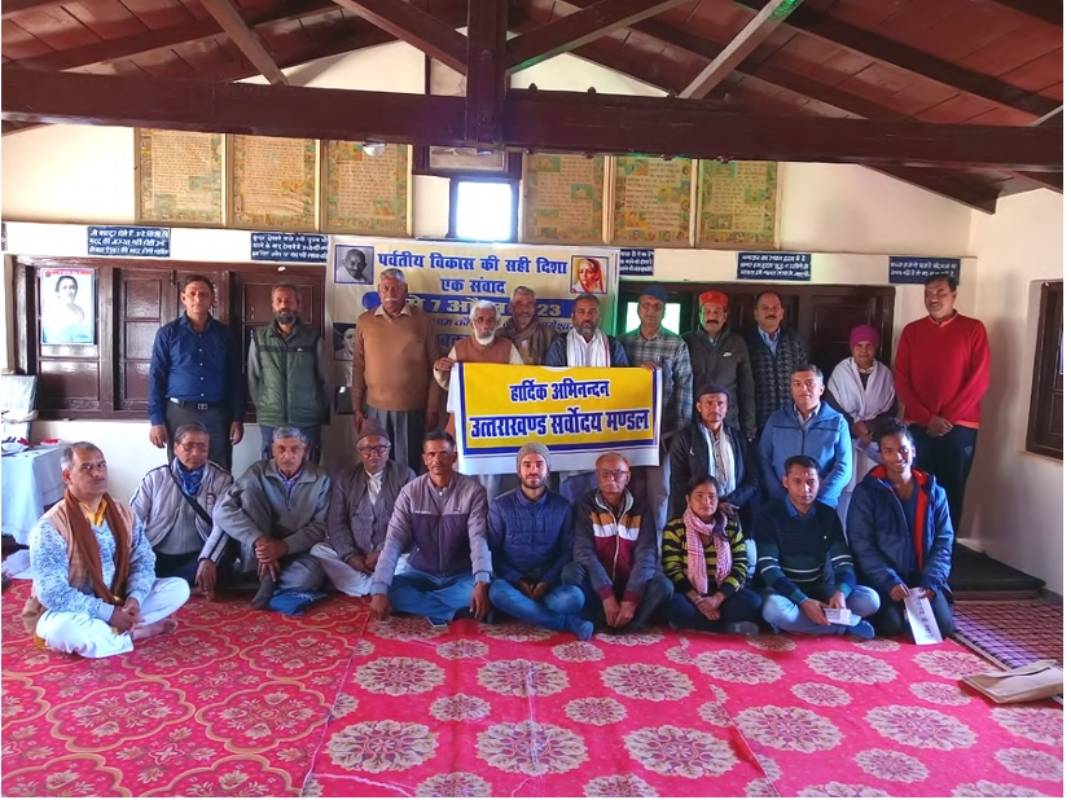
In 1977, Ms. Sarala Behn wrote a paper entitled ‘Pravatiya Vikas ki Sahi Disha’ as a suggestion paper to the sixth Five-Year-Plan. In this paper she provided Himalayan specific development strategies for a number of sectors such as road construction, forest, disaster prone development, agriculture, industry, preventing distress migration, securing drinking water and decentralization of energy production. In this paper Sarala Behn stressed that the forest policy must shift from continuous production to continuous natural development of forest resources. She explained the inter-linkages of major problems in mountains such as women’s drudgery, shortage of drinking water, landslides, disasters, reduction in food production and distress migration to the forest policies that aim for maximum profit. According to her indigenous forests in mountains have a symbiotic relationship with local livelihood, which needs to be preserved by allowing people to manage forests in the vicinity of villages[1].
Sarala Behn’s ideas for developmental strategies in the mountain region were her learning from constructive work in the Himalaya and shared wisdom of the Sarvodaya movement in the mountains of Uttarakhand. Sarvodaya leaders and activists were amongst first who voiced against irreversible loss caused in Himalayan region due to conventional development strategies. Disciple of Mahatma Gandhi, Ms. Mira Behn shifted to Uttarakhand after the assassination of Gandhi ji. While working with women in mountain villages, she deeply observed the sociology of forest and forest based livelihood in mountains. She found that oak forests are an integral part of local subsistence that provides people fuel, fodder and leaf manure. Moreover, these forests are highly important for ecological services in the mountains such as water conservation, minimizing risk of forest fire, habitat for wildlife, arresting soil erosion and preventing natural disasters. However, the prevailing development strategy in the region was promoting pine trees to extract resin and timber. In her article entitled – ‘Something wrong in the Himalaya’, written in 1952 she forecasted the consequences of changes in forest pattern in Himalaya and provided specific suggestions for conservation of indigenous forests and promotion of livelihoods[2]. Mira Behn submitted this article along with various photographs to the then Prime Minister Pt. Jawahar Lal Nehru, which he forwarded to concerned officials for necessary action.
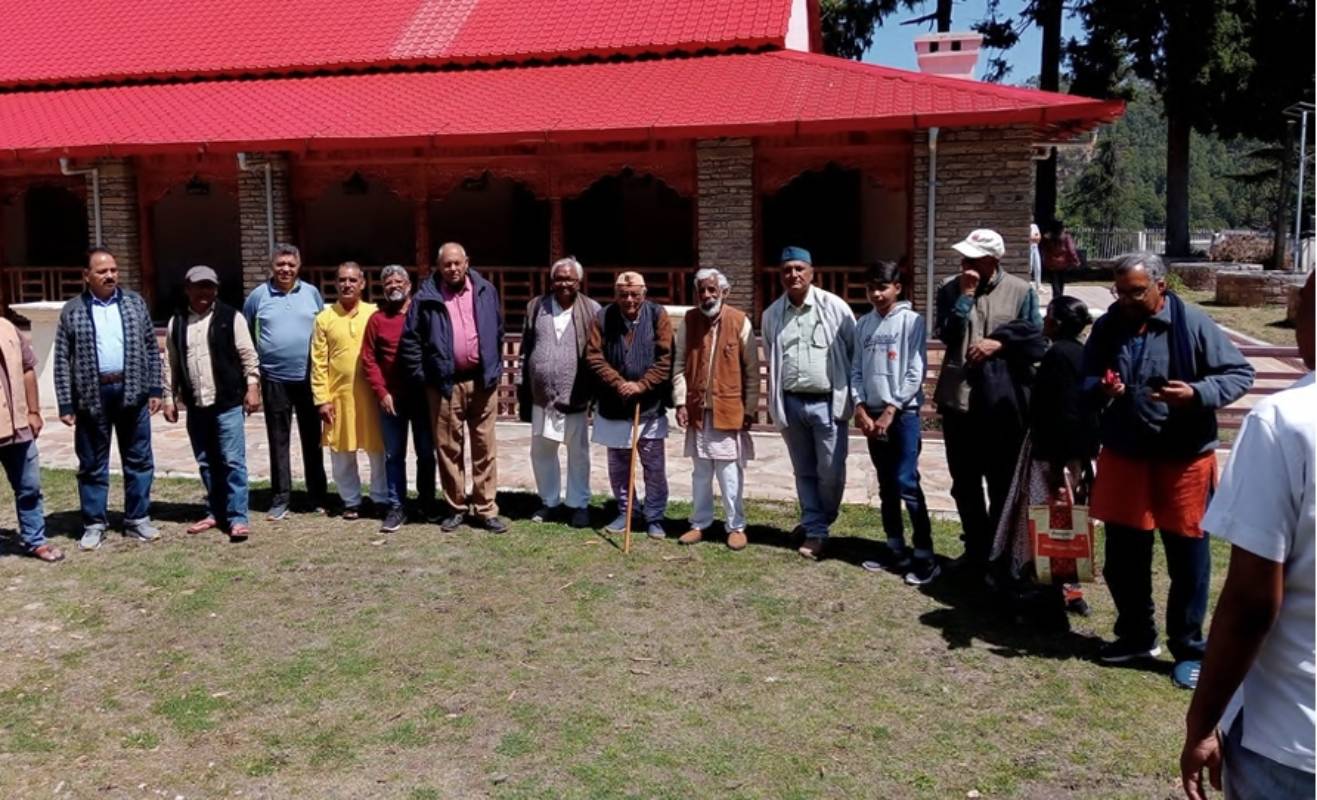
The Mountain Development Summit organized by the Uttarakhand Sadbhavana Samiti and Uttarakhand Sarvodaya Mandal discussed the idea of mountain development envisioned by Sarla Behn and other Gandhian thinkers. All discussions of the summit are categorized in four groups for the purpose of this article. These groups are: Infrastructure, Tourism and Disasters, Natural Resources- Land, Water and Forests, Communalism, Casteism and Migration and Citizen’s Responsibility in Democracy.
Infrastructure, Tourism and Disasters:
Large engineered infrastructures have been symbolized as development all across the globe. The mountain region is also not aloof from this dominant idea of progress and development. In the last few decades many large infrastructures were created in mountain states of India including Uttarakhand. Major infrastructure includes hydro power projects, highways, railway lines, electricity transmission lines and large public and private buildings. Many speakers in the summit critically commented on these large engineered projects in the mountains.
Dr. Ravi Chopra, Prof. Shekhar Pathak, Mr. Ishwar Joshi and Mr. P.C. Tiwari in their speeches highlighted the linkages between disaster and infrastructure. Taking the example of land sinking in Joshimath, speakers in the summit observed that this is the latest infrastructure linked disaster. Counting other incidents of infrastructure-induced disaster such as Mandakini Valley flash flood in 2013 and glacier burst in 2021 in Tapovan, speakers in the summit stressed on the need of mountain appropriate infrastructure in the Indian Himalayan Region.
Experts like Prof. P.C. Tiwari and former Member of Parliament Mr. Pradeep Tamta advocated for high end infrastructure technologies for infrastructure development in the mountains. Prof. Tiwari on the other hand advocated for integrated assessment of Himalayan geology, geography, hydrology and sociology as pre-condition for any infrastructural development in the region.
Natural Resources- Land, Water and Forests:
Uttarakhand is endowed with abundant natural resources such as water, land and forests. The mountain development summit expressed grief over un-regulated and non-scientific exploitation of natural resources of this mountain state. Dr. Ravi Chopra along with a number of other speakers evaluated the pretended development due to the hydro power project. Many of them also highlighted issues of drying river streams, drying of natural water sources in and around villages, retreating of glaciers, loss of aquatic biodiversity and increasing Himalayan temperature. Speakers have argued that a large mountain population does not have clean drinking water and water for agriculture but big corporations are making huge money out of water available in our river valleys. Various speakers of the summit advocated for increasing water recharge capacity through watershed activities and afforestation. Moreover, demands were made to make water available for local people for drinking, agriculture and rural industries.
P.C. Tiwari from Uttarakhand Parivartan Party and Mr. Indresh Maikhuri from Joshimath Bachao Andolan highlighted the issue of land grabbing in mountains by big corporations. Moreover, Mr. Pradeep Tamta observed that in the Indian Himalayan region, only 5% land is available for agriculture. Depending merely on the available agricultural land in the mountains is not possible, that is why other natural resources such as water, forest and common lands are important. Mr. P.C. Tiwari has argued that from the little land available, people with huge capital investment are grabbing land in the state. Despite people’s mobilization for stringent land law just before the last state general election, nothing has moved. Many other activists such as Bachi Singh Bisht, Bhuwan Pathak and Vijay Jardhari have expressed concern over destruction of crops by wild animals and policies related to them. They demanded better policies to protect the interest of local farmers.

Forest is an important natural resource available in Uttarakhand. Bhuwan Pathak, Ishwar Joshi and Tarun Joshi have explained the interrelationship of mountain economy, ecology and culture with forest and forest resources. Ishwar Joshi and Tarun Joshi have advocated for community management of forest resources through Van Panchayats. They expressed concern over increasing centralization of Van Panchayat governance that has adversely affected local lives and livelihood. Veteran Gandhian Ms. Radha Behn in her speech stressed on the need of planting more trees along the river banks and streams.
Communalism, Casteism and Migration:
Former Member of Parliament Mr. Pradeep Tamta in his speech explained how casteism is deep rooted in our mountain society. He further said that we often talk about environment and economy in the context of Uttarakhand and ignore the social problems such as communalism and casteism. He said that honour killing and exploitation of Dalits in mountain villages is against our constitution. He further requested the gathering to raise these issues simultaneously in order to ensure distribution of resources in just and equitable manner.
President of Uttarakhand Sarvodaya Mandal Mr. Islam Husain raised issues of communalism in mountain districts. He said that in the last few years, there have been concerted efforts to communalize every other issue such as the issue of Banbulpura in Haldwani and conflict in Ramnagar and other places. According to him the religious divide is sharply increasing in Uttarakhand leading to social distrust and conflict.
Prof. Shekhar Pathak linked casteism and communalism with migration. In his address he informed that the migration is not new in Uttarakhand. Initially people migrated from other places of India and Himalayan region to Uttarakhand and settled here. Ancestors of a large population of Uttarakhand had migrated here from other places. He further said that, today when other people are migrating here in search of peace and livelihood, our attempt to communalize them is morally and ethically dishonest as most of us ourselves are descendents of migrated people.
Citizen’s Responsibility in Democracy:

In most sessions of the mountain development summit, expert speakers stressed on the need for active involvement of people in planning, decision making and execution. Dr. Ravi Chopra argued that the conventional model of development can not be changed without people’s mobilization for mountain appropriate development. Prof. Sekhar Pathak in his speech reiterated this argument and asked people to come together and fight for the conservation and protection of sustainable mountain culture, economy and ecology. In the last session of the summit the Uttarakhand Sarvodaya Mandal decided to consolidate activities of different sister organizations of the Sarvodaya Mandal in the state and develop a common framework for them.
[1] Sarla Behn: Pravatiya Vikas ki Sahi Disha, 1977.
[2] Ram Chandra Guha: How Much Should a Person Consume?

